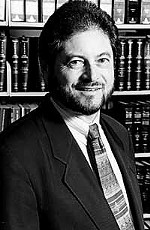Naked City
Developing Concerns
By Kevin Fullerton, Fri., June 2, 2000

It was an apartment community that, on paper, looked to be a showcase for the state's largest affordable housing program: 230 spacious units, most with three and four bedrooms, arrayed in short rows of two-story townhomes sprawled across 18 acres backing up to the Williamson Creek greenbelt in Austin. Amenities were to include private driveways and garages, a computer center, a pool, even a basketball court. All this and rents fixed below market rate. Last summer, the Texas Department of Housing and Community Affairs awarded the developer, Arrowhead Partners, over $10 million in federal tax credits to build the complex, called Springvalley Townhomes, at 2402 E. William Cannon.
So when can potential tenants sign up to lease their new townhomes? Well, perhaps never. That's because Arrowhead isn't going to build anything resembling a townhome community. According to a site plan filed with the city of Austin, the development will actually consist of 12 massive, three-story apartment buildings, not the 38 smaller buildings originally promised. There will be no four-bedroom apartments, and precious few three-bedrooms, either; even the remaining two-bedroom units have been scaled down considerably in size. There are no private drives, little room for common areas, and no ball court. And the "creekside" lot, it turns out, is mostly hillside, limiting its development under Austin's watershed protection ordinance.
Eight other projects in Austin vied with Springvalley Townhomes for tax credits last year, but TDHCA bumped them all in favor of Springvalley, which received one of the highest scores and most lucrative awards of 1999. Now that the development has morphed into something entirely different, will the agency revoke the credits? That remains to be seen, but if the past is any indication, Springvalley will prevail. It has already benefited from the charitable graces of TDHCA staff on several occasions.
Shortly after Springvalley won their tax-credit allocation in July, TDHCA documents show, the agency received a revised site plan and a letter from the architect explaining that the complex couldn't be laid out as originally designed because of the watershed ordinance. A planner at the agency responded that the new plan, which had replaced two of the two-story townhomes with three-story structures, violated the terms of the tax-credit award. But a letter from the office of tax-credit program manager Cherno Njie approved the changes. Njie also extended the deadline for closing on the construction loan by two months, after the developer wrote that he was having trouble complying with the city ordinance.
Austin developers contacted for this story say it's not unusual for site plans to run afoul of Austin's arcane building restrictions, but they were surprised at the extent of TDHCA's leniency on the loan deadline; "Good developers close on their loans," one consultant said. Upon being shown a comparison of the proposed and actual Springvalley designs, nonprofit developer Walter Moreau, whose Austin project was passed over last year, said Springvalley has been reduced to a low-quality development falling far short of the standards the tax-credit program purports to exact. "You just can't allow a developer to change a project" to this extent, he said. "The whole integrity of the process goes out the window."
So why would TDHCA go to such lengths to help a lame project along? It's not as if the development partners listed on the tax-credit application, Monday Esiere and David Leonard, have proven track records. Neither of the two had ever completed a tax-credit development when Springvalley won tax credits in 1999, although two years before Esiere had won one of the largest awards in the program's history to build Douglas Landings, an unimpressive, vinyl-clad complex on East Oltorf.
But there's one other important factor not disclosed anywhere in Arrowhead's application for tax credits: The true head of the project is John Paul, listed as the president of Arrowhead Partners on the site plan filed with the city. Paul was at the center of controversy in 1998 when rival developers put a report before Governor George W. Bush accusing TDHCA of choosing Paul's projects over others even though his were arguably inferior. In the last three tax-credit allocation rounds, Paul and Esiere have together garnered more tax credits than any other development team in Texas save one, receiving a whopping $45 million in credits between them. In 1999, however, Paul disappeared from the tax-credit tournament -- or so everyone thought. It goes without saying that Paul's failure to reveal his participation in Springvalley Townhomes is a flagrant violation of program rules.
For Paul's latest project to happen, however, it appears that tax-credit manager Njie will have to perform some impressive cartwheels. The deadline for the project to close on its construction loan was Tuesday, May 30. Failure to close on the loan could lead to a revocation of credits, but the loan can't be forwarded until the developer has a building permit in hand. And officials at the city's Development Review and Inspection Department say the city isn't due to release the plans back to the project engineer, probably with further revisions, until Friday, June 2.
Asked for comment on his project, Paul replied that "the mayor is working with the department very hard for approval," and that someday he "will catch up with" the persons paying Chronicle reporters to interfere in his business. Then he hung up. The mayor's office said it had no idea what assistance Paul was referring to, and DRID project manager Trann Lackey said his department hadn't been pressured to hurry the site plans through, though he did say that his staff tries extra hard to accommodate affordable housing projects because of the demand. Njie has declined to comment on the project until the city signs off on the plans and they arrive on his desk for inspection.
Got something to say on the subject? Send a letter to the editor.








